Land Invertebrates
Media

Species Types
Scientific Name
Neriene radiata (formerly Prolinyphia marginata)
Description
The filmy dome spider is one of the most abundant woodland spiders in Missouri. Although the spider is tiny, its snare web, which looks like an upside-down silk bowl, is conspicuous throughout the year.
Media
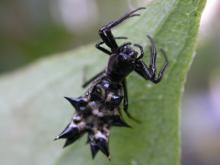
Species Types
Scientific Name
Micrathena gracilis
Description
The color pattern can vary, but the ten-spined, chunky abdomen sets the female spined micrathena apart from all other spiders.
Media
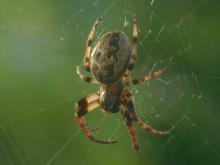
Species Types
Scientific Name
Larinioides spp.
Description
Furrow orbweavers have a distinctive dark pattern on the abdomen that resembles a furrow. These harmless spiders are common under the eaves of homes and near porch lights.
Media
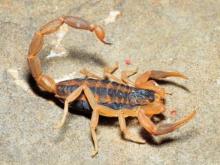
Species Types
Scientific Name
Centruroides vittatus
Description
Striped bark scorpions are pale yellowish brown, usually with two lengthwise dark stripes on the abdomen. It is the only species of scorpion in Missouri. It occurs in glades and other dry, warm, rocky areas, and sometimes in buildings and shelters and under piles of wood, brush, or garbage.
Media
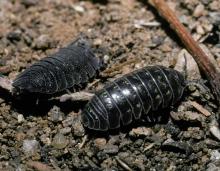
Species Types
Scientific Name
Land-dwelling members of the crustacean order Isopoda
Description
Pillbugs, roly-polies, woodlice, and sowbugs — the terrestrial members of order Isopoda are familiar to anyone who has overturned a rock. But what do you really know about them?
Media

Species Types
Scientific Name
About 84 species in North America.
Description
Many blow flies are so shiny and colorful they’re called greenbottles and bluebottles. But pretty as they are, it’s hard not to be repulsed by their larval diets.
Media

Species Types
Scientific Name
About 1,000 species in North America north of Mexico
Description
Many apid bees are well-known. This family includes the familiar honeybee, bumblebees, and carpenter bees, plus many that are less well-known. With few exceptions, most of Missouri's apid bees are native, solitary species.
Media
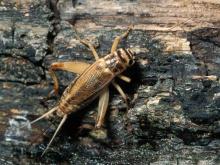
Species Types
Scientific Name
Acheta domesticus
Description
House crickets are probably native to Eurasia but are found nearly worldwide, having traveled the globe with people. Unlike most other field crickets in our area, they are tan and brown instead of glossy black.
Media

Species Types
Scientific Name
About 28 species in North America
Description
Horntails look a lot like wasps but have a taillike spine that projects from the tip of the abdomen. Their cylindrical bodies also lack the narrow waist so common in wasps.
Media
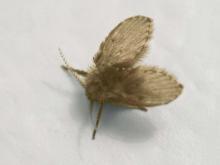
Species Types
Scientific Name
Members of subfamily Psychodinae
Description
Moth flies look like tiny, hairy moths. People usually notice them perching next to sinks in the bathroom or kitchen. When disturbed, they usually don't fly very far before landing again, for they are weak fliers.
See Also



Media

Species Types
Scientific Name
Cisseps fulvicollis
Description
The yellow-collared scape moth is more often “orange-collared.” And whether you think it looks more like a firefly or a wasp, it’s still a moth!
Media

Species Types
Scientific Name
Nearly 150 species in North America north of Mexico
Description
Slim, delicate plume moths are instantly recognizable by their T-shaped silhouette, long legs, and muted shades of tan and brown. It can be hard to separate the various species.
Media

Species Types
Scientific Name
Pyrrharctia isabella
Description
Not many people know the adult Isabella tiger moth when they see one, but we’re all acquainted with its caterpillar, the woolly worm, or woolly bear.
About Land Invertebrates in Missouri
Invertebrates are animals without backbones, including earthworms, slugs, snails, and arthropods. Arthropods—invertebrates with “jointed legs” — are a group of invertebrates that includes crayfish, shrimp, millipedes, centipedes, mites, spiders, and insects. There may be as many as 10 million species of insects alive on earth today, and they probably constitute more than 90 percent all animal species.





















